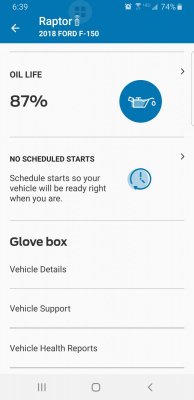Yes sir, indeed. Initial break-in oil is potentially the dirtiest motor oil of an engine's life unless it is badly neglected. Think about casting flash, break-in particulates, assembly lube... It is a very good idea to change the oil at the 1,000 mile mark. Think of it as a cheap investment in the future of the vehicle you bought with your hard earned paychecks.
This ^^^
My Blackstone analysis from the first change at about 1800 miles (after a filter change at roughly 500 miles) showed 94ppm copper (averages 23), 173 boron (averages 42), 38 ppm iron (averages 22), 111 silicon (averages 18), and 825 zinc (averages 763). All except the silicon were attributed to wear-in, and the silicon was felt to be due to silicone-based sealers used during assembly. The viscosity was also a bit low at 53.6 (normal 54-63). Interestingly, aluminum was only slightly elevated (8 ppm, average 5); lead, tin nickel and sodium were all at/below 'averages' from them.
At the second (most recent) change at 4220 miles (with M1 full syn 5W30), aluminum was down to 5, iron down to 23, copper down to 33, silicon down to 29, boron down to 70. Viscosity was good at 58, and the TBN analysis (additive package components) was still 3.4. They said I could try extending the interval to 6000 miles, which I'll do just to see what it looks like. It'll probably be in the next few weeks as I'm at ~5700 miles now. In my Tacoma (3.4 V6) I'll do between 5K and 7.5K depending on how hard I've flogged it, and at 185K miles it doesn't lose a measurable amount between changes, and the end of the exhaust is clean and dry, and the plugs show no oil fouling at all.



